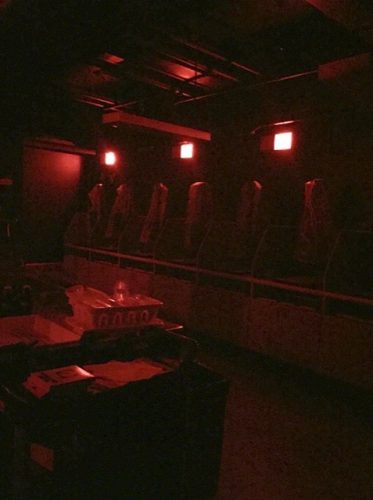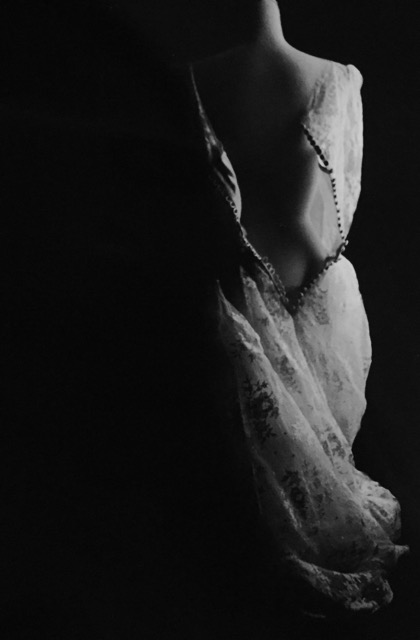In this guest post, University student Becca Marshall examines how photography can reveal the Huron County Museum as a ‘gathering place’ for both people and things, and how the two intersect.
Hi everyone! My name is Becca Marshall and I am currently a fourth year student at Brock University where I study Concurrent Education with a focus in Visual Art and History. I have always been interested in cross disciplinary studies, so when the opportunity came to combine my love of history and art in the form of an independent study course – I took it! As I considered directions for my project I kept finding myself being pulled back to the Huron County Museum where I was a summer student in 2015. Luckily for me, the museum staff offered to assist me on my year-long project developing a research paper and analog photography portfolio on the topics of ‘removed perception’ and constructed narrative. So today I thought I would give you all a peek at what I have been up to so far.
 I started my project by photographing artifacts that are not currently on display in the museum’s main exhibition spaces. A large portion of my focus is looking at the museum as a “gathering place” (as one of my supervising professors termed it) and how even the most seemingly unconnected objects end up being tied together by the very fact that they all ended up in the same building. Some of my favourite artifacts to photograph so far have been a wedding dress belonging to Jean Taylor and a child’s sewing machine. Once I have the negatives developed I start working with methods of interrupting the images. Visual negations are a reference to our human tendency to insert ourselves into art and history and how this both enhances our experience, but also illuminates our limitations to understand an artifact’s experience objectively. These visual negations are indicative of my study of removed perception -how every single person will view an artifact (or a photo!) differently depending on their lived experiences. Essentially, the photos both highlight the personal relationships we form with artifacts while also recognizing a barrier – despite providing a window, a photo cannot physically transport someone back to the original objective context.
I started my project by photographing artifacts that are not currently on display in the museum’s main exhibition spaces. A large portion of my focus is looking at the museum as a “gathering place” (as one of my supervising professors termed it) and how even the most seemingly unconnected objects end up being tied together by the very fact that they all ended up in the same building. Some of my favourite artifacts to photograph so far have been a wedding dress belonging to Jean Taylor and a child’s sewing machine. Once I have the negatives developed I start working with methods of interrupting the images. Visual negations are a reference to our human tendency to insert ourselves into art and history and how this both enhances our experience, but also illuminates our limitations to understand an artifact’s experience objectively. These visual negations are indicative of my study of removed perception -how every single person will view an artifact (or a photo!) differently depending on their lived experiences. Essentially, the photos both highlight the personal relationships we form with artifacts while also recognizing a barrier – despite providing a window, a photo cannot physically transport someone back to the original objective context.
 More specifically, in terms of technique I am working with an analog camera to create a series of silver-gelatin prints. Once I take the photos I remove the film in the darkroom, wind it onto a reel, put it in a canister, and then soak it in a series of chemical baths. After this process the film is developed and can be exposed to light as I remove it from the dark room and take it to the drying cabinet. After that I select the negative I want to make a print of and go into the darkroom with the red lights on (as red lights will not harm the light sensitive paper). Next, I insert my negative into an enlarger that will use directed light to expose the image onto my paper. It is during this process that I create any visual interruptions – for example the attached image of the sewing machine was created by dragging a thread across the paper for a split second during the exposure time. I then take the paper over to another series of chemical baths to develop the image. I am currently coming up with new ways to interrupt the images – for example I am experimenting with using a swath of lace during the exposure process on the wedding dress image to see what effect it produces. The entire process is incredibly engaging, and each artifact seems to demand a different sort of treatment that is entirely unique from the others.
More specifically, in terms of technique I am working with an analog camera to create a series of silver-gelatin prints. Once I take the photos I remove the film in the darkroom, wind it onto a reel, put it in a canister, and then soak it in a series of chemical baths. After this process the film is developed and can be exposed to light as I remove it from the dark room and take it to the drying cabinet. After that I select the negative I want to make a print of and go into the darkroom with the red lights on (as red lights will not harm the light sensitive paper). Next, I insert my negative into an enlarger that will use directed light to expose the image onto my paper. It is during this process that I create any visual interruptions – for example the attached image of the sewing machine was created by dragging a thread across the paper for a split second during the exposure time. I then take the paper over to another series of chemical baths to develop the image. I am currently coming up with new ways to interrupt the images – for example I am experimenting with using a swath of lace during the exposure process on the wedding dress image to see what effect it produces. The entire process is incredibly engaging, and each artifact seems to demand a different sort of treatment that is entirely unique from the others.

Dark room.
In terms of my research paper I am currently developing its direction through my experiences at the museum, studies in the archives, and by reading various books and journal articles. Through this process I hope to better understand the intentions, ethics, and reasoning behind how artifacts are displayed in museums. I want to learn how museums negotiate preserving the narratives of an artifact’s provenance, or how they may be used to illustrate larger messages, as well as how they reconcile artifacts with missing information (which arguably can be just as fascinating as an artifact that has pages recorded about its provenance). The inspiration for this research direction came from my encounter with a linoleum block in the collections room made by Thomas Pritchard. When I went to the archives to learn more about him I expected the file to be full of his artistic accomplishments – however much to my surprise, the majority of the documents were about his experience at war. I hope to write about this experience in greater detail in my next blog post as well as have a photo of his linoleum block developed at that time. By engaging in this research practice I hope to develop a better understanding about constructed and interpreted narrative through the display of artifacts in museums.
Overall, so far I am having an amazing experience getting to learn more about museums and engage with such uniquely wonderful artifacts. I cannot thank the staff at the Huron County Museum and Archives enough for assisting me with my studies and allowing me to see how art, history, and museum studies can all cross over and inform each other in the most interesting ways. I look forward to seeing how this project develops this year, and I hope you enjoy my periodic updates throughout the duration.

